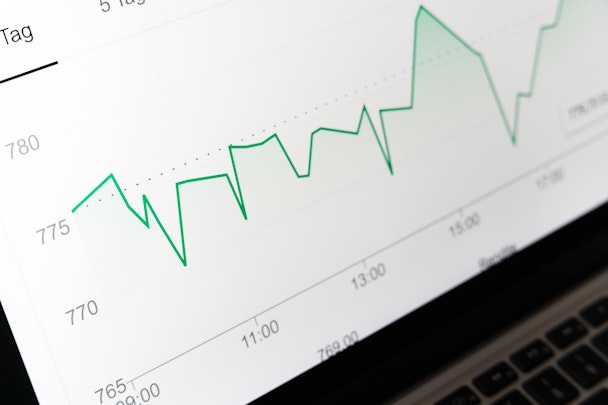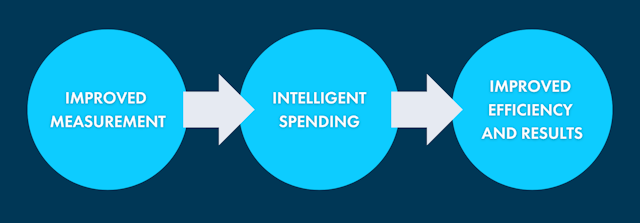How marketers can leverage GA4 to enhance the user path without infringing on privacy
Upon the arrival of Google Analytics’ much-vaunted GA4, Search Laboratory’s Jimmy McCann looks under its hood.

How will Google Analytics 4 level-up user paths? / Markus Winkler via Unsplash
Now that users better control the data they share online, marketers everywhere have faced one major hurdle: targeting consumers who don't want to sacrifice their privacy and (perhaps more importantly) don't want to share their personal data.
While some consumers are still comfortable providing first-party data, many do not consent to cookies, making traditional tracking methods unreliable or even obsolete. Meanwhile, the user journey is more complex than ever, with varied touchpoints on websites, mobile apps, and in physical stores.
Marketers must fill the gaps of a fragmented user path with reliable data without infringing on the user's privacy. Google Analytics 4 (GA4) is one of the best solutions available.
Why use GA4?
GA4 provides digital marketers with several advantages that lead to improved measurement of marketing activity, a more comprehensive understanding of where budget is going, and improved efficiency in process and conversion.

The platform allows marketers to understand how to reach customers with effective messaging at the right point in the customer journey – it can preserve the user path; restore lost data paths (through advanced modelling); and improve attributed credit.
Together, these advantages allow marketers to build a clearer picture of the user path, mitigating the issue of fragmented user data collection. Here’s how.
Advertisement
1. Preservation
GA4 uses three pillars of identity (UserID, DeviceID and Google Signals), blended (unlike in Universal Analytics) to efficiently preserve the user path.
UserID is a unique user identifier set by the business (eg. an anonymous customer number). For this to be assigned, the user must authenticate themselves through a transaction or login.
DeviceID is an anonymous, unique user identifier set by the GA cookie, also known as a ClientID (renamed to also refer to a mobile device ID).
Google Signals include the anonymized user data gathered from signed-in Google users taking advantage of Google products, such as Android, Search, Chrome, YouTube and Google Maps. This allows GA to remove duplicated users, creating a more representative figure in aggregated reports.
By combining data from these three pillars of identity, GA4 allows marketers to see a complete view of the user path, generating a better understanding of performance with more representative figures. With better data insights, marketers can build a more robust, informed strategy.
Advertisement
2. Restoration
For regulatory compliance, almost all websites employ a consent management platform, where users can choose not to share data. If a user interacts with a business across several touchpoints, a business needs the user's consent to track them and string those interactions together.
Without this consent, marketers must deal with potentially misrepresented data relating to users, their interactions, and the all-important conversion.
Consent Mode helps GA4 get around this. It doesn't track users who have not given consent, instead cataloguing anonymous pings for conversions and interactions. Since these indicators are entirely anonymous, it’s impossible to string the interactions together independently.
GA4 combines these anonymous pings with known data from previously-consented users. Anonymized data fills in gaps within the approved data, allowing analytics to restore user and conversion data that would normally be lost.
In addition to Consent Mode, Modelled Conversions is another feature of GA4 that will restore fragmented user data. User path data lost due to multiple devices, ITP, ATT, and a lack of consent will be modelled using similar known paths, leading to better, more comprehensive attribution.
3. Attribution
With a more comprehensive view of the user path, marketers can better understand what activities drive conversions. Combined with sophisticated attribution modeling, GA4 improves the distribution of credit to those activities that lead to the most valuable interactions.
GA4 employs a sophisticated data-driven attribution (DDA) methodology (based on the Shapley value with an added time decay element) where interactions that happen more recently are valued more than actions that happened a long time ago. This new approach distributes credit more effectively across the entire user path.
Suggested newsletters for you
3 ways GA4 can ingest first-party data
Today's marketing landscape requires supplemental first-party data to improve digital maturity and drive incremental growth. GA4 has been built with this in mind, with many options to import this data into the platform.
GA4 allows marketers to enrich analytical data without relying on cookies. To do so, marketers need to extend their view of customers and business as far as possible. Three ways GA4 enables this include:
-
User ID: GA4 allows marketers to widen the data for 'known users' upon login. This means that all known data (eg CRM audience segment, number of purchases to date, lifetime value, and other useful customer information that is currently detached) can be associated with the user. This improves the accuracy of core metrics, allowing a comparison of signed-in and non-signed-in users.
-
Data import: Marketers can upload lookup tables or add new events to create a more detailed overview. For example, marketers can import cost data from ad platforms or profit margins against products to create a more comprehensive, centralized view of acquisition and outcomes.
-
Measurement protocol: GA4 allows marketers to stream events from other systems, such as a CRM or point-of-sale system (PoS), enabling data collection from platforms other than websites and mobile apps. It can be integrated with kiosks and other PoS systems to further improve the scope of analytics data.
GA4 is an essential tool for marketers in an increasingly cookie-less world. It can fill in the gaps left by users opting out of sharing first-party data, string together an already-fragmented user path, create an enhanced picture with actionable insights, and allow marketers to make informed decisions supported by data.
You can learn more about how marketers can leverage GA4 in Search Laboratory’s workshop: Future-proofing analytics: setting up for success with Google Analytics 4.
Content by The Drum Network member:

Search Laboratory
Search Laboratory is an award-winning, integrated digital marketing agency with offices in Leeds, London, and Austin TX.
A proud member of Havas Media Network,...

